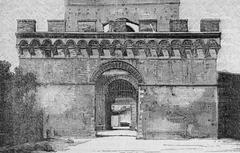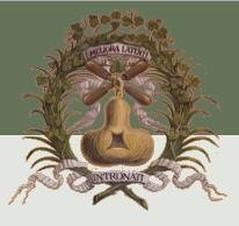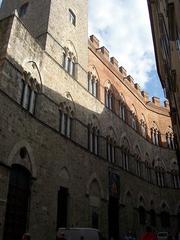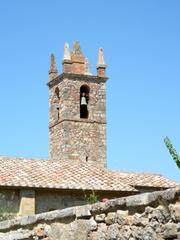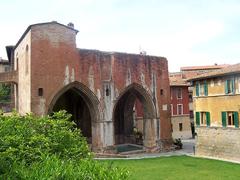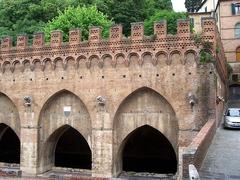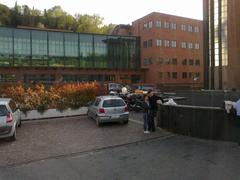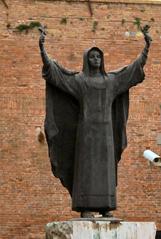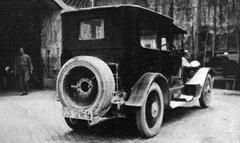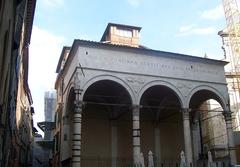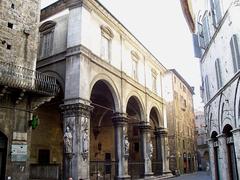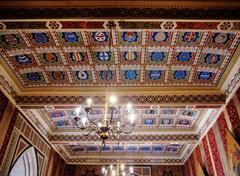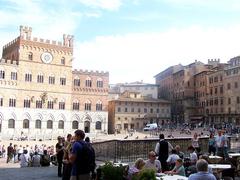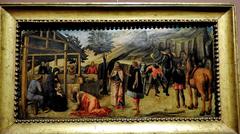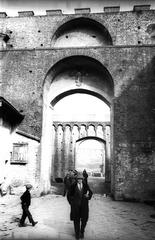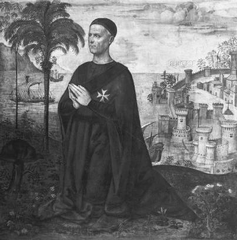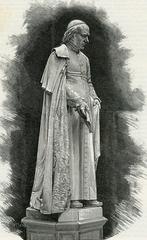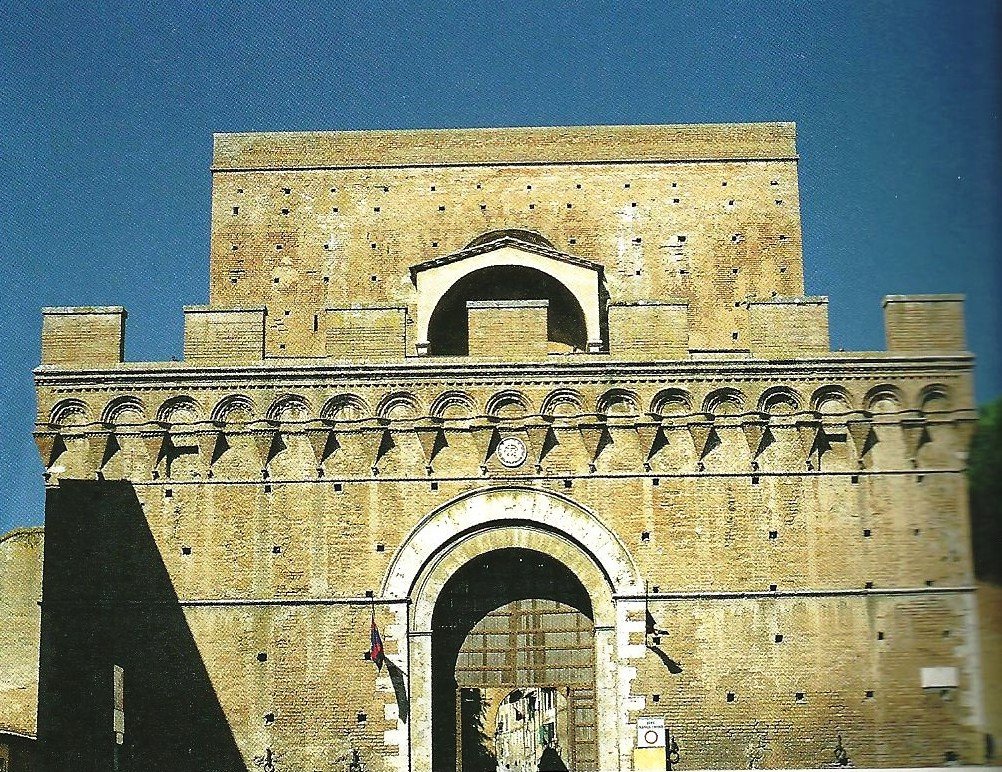
Visiting Porta Pispini: Hours, Tickets, and Historical Sites in Siena
Date: 23/07/2024
Introduction
Porta Pispini, also known as Porta dei Pispini, is a historic gate located on the eastern perimeter of Siena, Italy. Constructed between 1326 and 1327 under the direction of the renowned architect Minuccio di Rinaldo, Porta Pispini is a significant remnant of Siena’s medieval fortifications. This gate, with its robust military architecture, not only served as a critical defensive structure but also facilitated trade and controlled access to the city from the direction of Arezzo and the Val di Chiana (Exploring Porta Pispini). Its architectural features, including a pointed Gothic arch and crenellated parapet, reflect the city’s rich heritage and resilience. Over the centuries, the gate has withstood various historical events, such as the Battle of Montaperti and the conflicts with Florence, symbolizing Siena’s enduring spirit. Today, Porta Pispini continues to captivate visitors with its historical significance and architectural beauty, offering a glimpse into Siena’s storied past.
Table of Contents
- Introduction
- Historical Background
- Restoration and Preservation
- Cultural Significance
- Visitor Information
- Travel Tips
- Nearby Attractions
- Guided Tours and Special Events
- Photographic Spots
- FAQ
- Conclusion
Historical Background
Origins and Construction
Porta Pispini’s origins date back to the 14th century, during a period of significant expansion and fortification in Siena. Constructed between 1326 and 1327 under the direction of the renowned architect Minuccio di Rinaldo, the gate was part of the city’s defensive walls, which were essential for protecting Siena from external threats and controlling access to the city.
Architectural Features
Porta Pispini is an exemplary model of medieval military architecture. The gate features a robust and imposing structure, designed to withstand sieges and attacks. It is constructed from brick and stone, materials commonly used in Sienese architecture. The gate’s design includes a pointed arch, a typical element of Gothic architecture, and a crenellated parapet above the arch, providing a defensive position for archers and guards. The gate also features a machicolation, a projecting gallery with openings through which defenders could drop stones or boiling oil on attackers.
Strategic Importance
Located on the eastern side of Siena, Porta Pispini provided access to the city from the direction of Arezzo and the Val di Chiana. This route was crucial for trade and communication, making the gate a vital point of entry. The gate’s position also allowed for monitoring and control of goods and people entering the city, contributing to Siena’s economic and social stability. During times of conflict, Porta Pispini served as a critical defensive point.
Historical Events
Porta Pispini has witnessed numerous historical events, including the significant Battle of Montaperti in 1260. Although the battle predates the gate’s construction, it led to the expansion and fortification of Siena, including the construction of Porta Pispini. In the 16th century, the gate played a role in the conflicts between Siena and Florence. In 1555, after a prolonged siege, Siena fell to the Florentine and Spanish forces. Despite the eventual defeat, the resilience of the Sienese defenders at Porta Pispini became a symbol of the city’s spirit and resistance.
Restoration and Preservation
Over the centuries, Porta Pispini has undergone various restoration and preservation efforts to maintain its structural integrity and historical significance. In the 19th century, the gate was restored as part of a broader initiative to preserve Siena’s medieval heritage. More recently, in the 21st century, further restoration projects have been undertaken to address the wear and tear caused by time and environmental factors.
Cultural Significance
Porta Pispini holds a special place in the cultural and historical identity of Siena. It is not just a physical structure but a symbol of the city’s rich medieval heritage and resilience. The gate is an integral part of Siena’s urban landscape, contributing to the city’s unique character and charm.
Visitor Information
Visiting Hours
Porta Pispini is accessible to visitors year-round. However, it is advisable to check the official Siena tourism website for the most up-to-date visiting hours.
Ticket Prices
Entry to Porta Pispini is generally free, but some guided tours may charge a fee. Check with local tour providers for more details.
Accessibility
The gate and its surroundings are accessible to most visitors, but some areas may present challenges for those with mobility issues. It is recommended to verify accessibility options in advance.
Travel Tips
- Wear comfortable shoes, as exploring the area involves walking on uneven surfaces.
- Bring a camera to capture the stunning views and architectural details.
- Consider visiting during off-peak hours to avoid crowds.
Nearby Attractions
After exploring Porta Pispini, visitors can enjoy other nearby attractions, including:
- Siena Cathedral - A masterpiece of Gothic architecture.
- Piazza del Campo - The main public square of Siena, known for its unique shell shape.
- Palazzo Pubblico - The town hall with its iconic tower, Torre del Mangia.
Guided Tours and Special Events
Guided tours are available for those interested in a more in-depth exploration of Porta Pispini and its history. Special events, such as historical reenactments and cultural festivals, are occasionally held at the site, offering a unique experience for visitors.
Photographic Spots
Porta Pispini offers numerous opportunities for photography enthusiasts. The gate itself, the surrounding walls, and the views of the countryside are perfect for capturing memorable shots.
FAQ
Q: What are the visiting hours for Porta Pispini? A: Visiting hours can vary, so it is best to check the official Siena tourism website for the latest information.
Q: Is there an entry fee for Porta Pispini? A: Generally, entry to Porta Pispini is free, but some guided tours may charge a fee.
Q: Are there guided tours available? A: Yes, guided tours are available and provide detailed insights into the history and architecture of Porta Pispini.
Conclusion
Porta Pispini is a remarkable historical site that embodies the rich heritage and enduring spirit of Siena. Its architectural features, strategic importance, and historical events make it a fascinating subject of study and exploration. Through ongoing preservation efforts, Porta Pispini continues to stand as a testament to Siena’s medieval past, offering visitors a unique and enriching experience.
To stay updated on Porta Pispini and other historical sites in Siena, download the mobile app Audiala, check out our other related posts, or follow us on social media for more updates.

